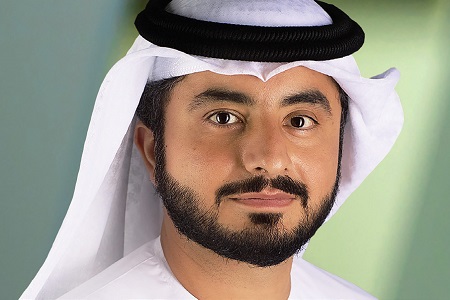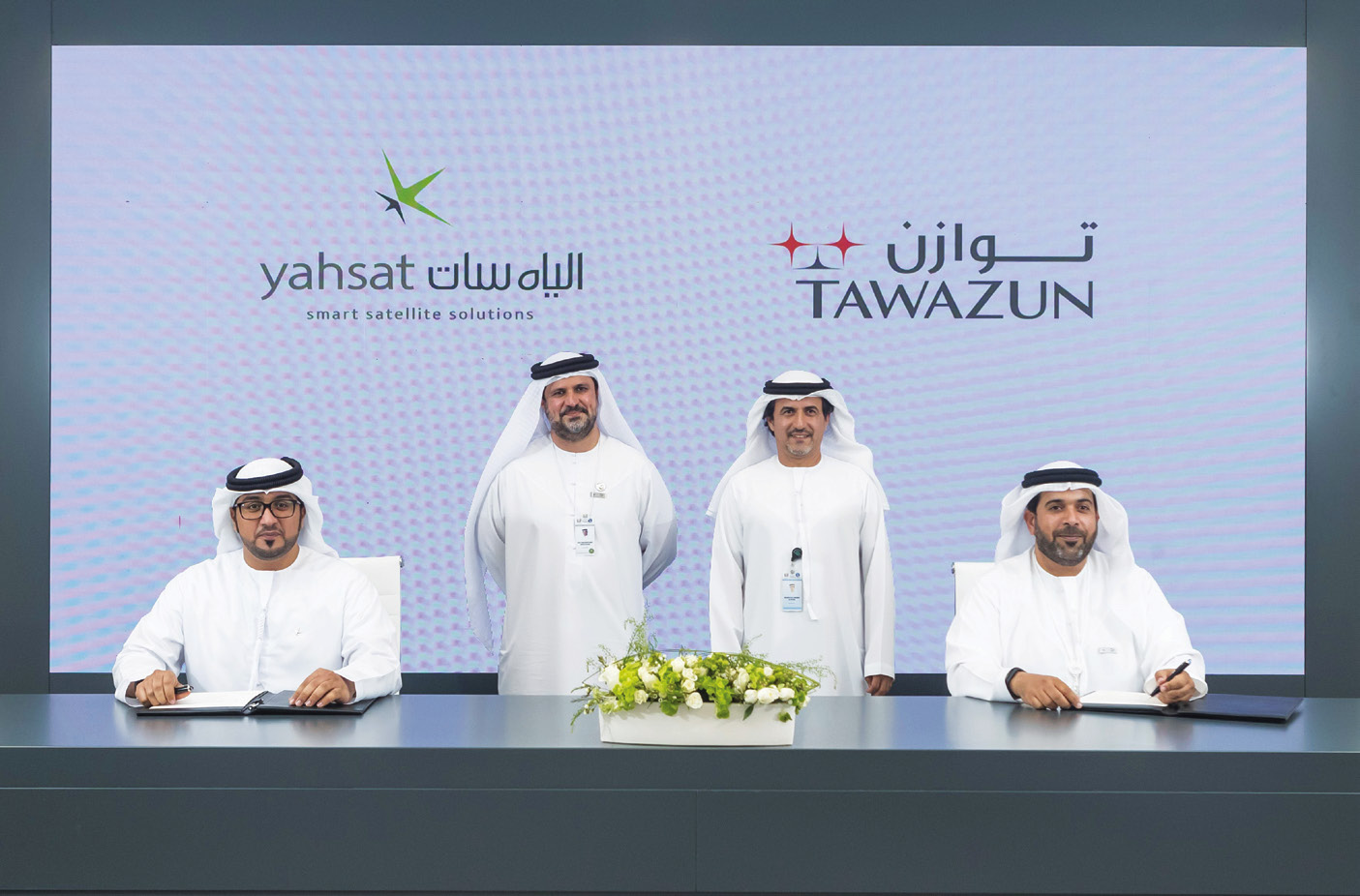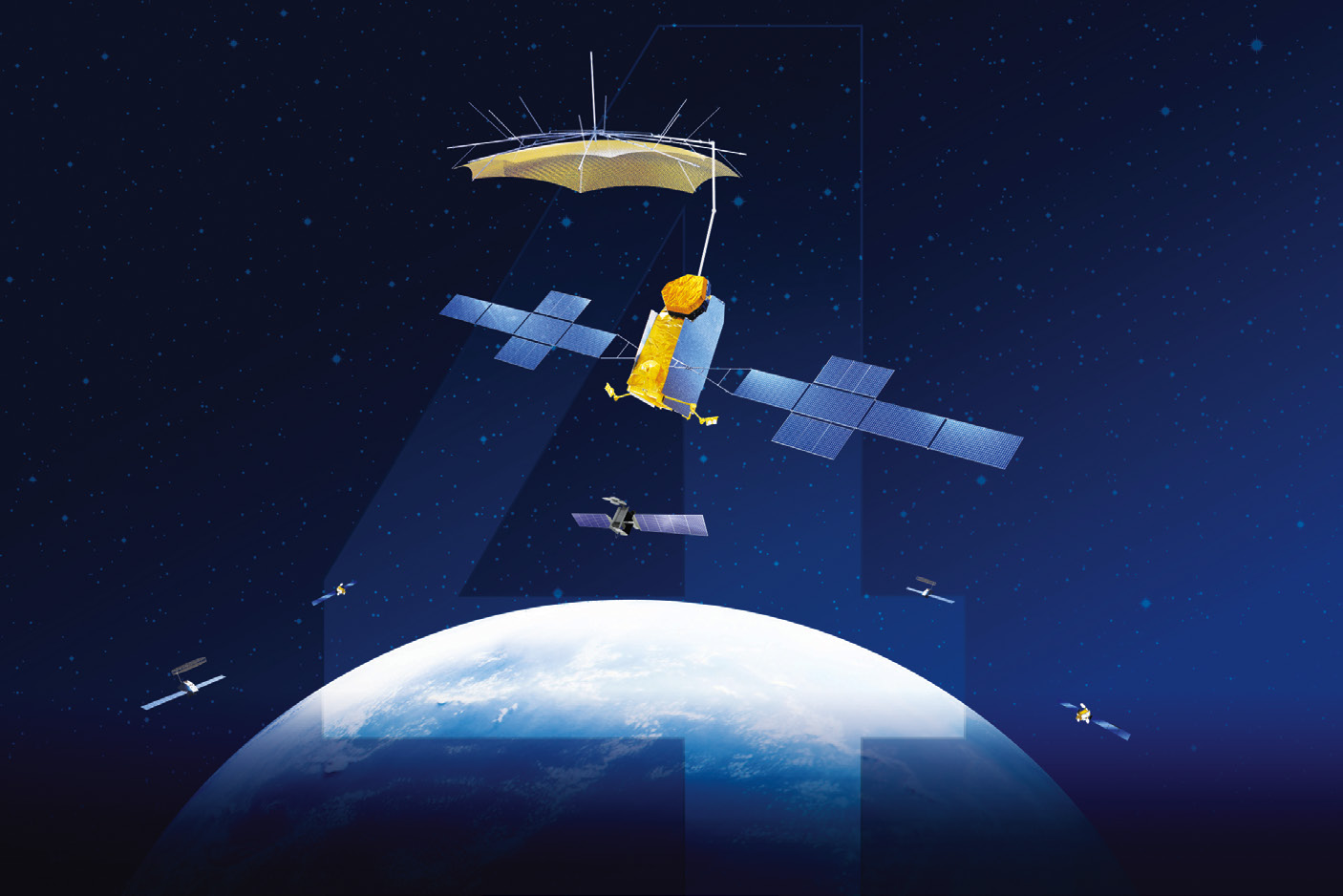
Tell us more about your sixth satellite launch. Why do you need a sixth satellite now?
The USD 500m Thuraya 4-NGS programme sets the pace for the next phase of Yahsat’s growth – across our core markets in the Middle East, Africa, Europe and West Asia. At the heart of this ambitious programme is a new L-band satellite system that will significantly build the capabilities and reach of the next generation of mobility solutions offered by our MSS subsidiary, Thuraya. Scheduled for launch in late 2023, this sixth satellite is a significant step forward in the diversification of Yahsat’s strategic interests and a testament to our commitment to create bigger and better opportunities for partners and end customers alike.
Thuraya 4-NGS signals our intent to innovate and evolve the industry landscape constantly.
What will be the main focus with the new satellite? Who are the contractors and when will this be ready?
Thuraya 4-NGS is a GEO satellite, which is being developed in partnership with Airbus, with an intent to increase the flexibility, efficiency, and capabilities of the Yahsat fleet, which in turn will support our long-term ventures and growth within the mobile satcom industry. It is based on the high power, all-electric Airbus Eurostar Neo platform that is synonymous with superior reliability, security, robustness and resilience.
The satellite has a 12-metre L-band antenna and a payload with on-board processing providing advanced routing flexibility of up to 3200 channels with dynamic power allocation over a large number of spot beams. Once operational, it will support more than three times the number of users in comparison to traditional MSS satellites. The system ensures advanced performance capabilities, allowing a wide range of data rates (up to 1 Mbps) and is flexible enough to support a diverse portfolio of products, ranging from very small IoT devices and handhelds to portable data terminals.
Overall, we are incredibly excited about the outcome and look forward to sharing more insights as we mark new programme milestones.
We hear there are plans to make some satellite components within the UAE itself?
Yes, this is true. In February this year, we signed a Memorandum of Understanding with Tawazun Economic Council to set up a new company that will produce critical satcom technologies within the UAE. This entity will develop, test, and manufacture advanced satellite communication solutions, utilizing local and international expertise.
Aside from manufacturing, the company will also enrich local talent through R&D and knowledge sharing. Yahsat’s long-standing partnerships with the UAE Armed Forces and other national initiatives support our fundamental commitment to create new opportunities for all Emiratis. At the same time, these collaborations are going to contribute to the growth and diversification of our nation’s economy in a very big way.

As someone who is also responsible for Thuraya, how do you see the world of 5G communications and satellite coming together?
Thuraya’s main goal is to develop mobility solutions that will make satellite communications accessible to everyone, so we can be sure that the world always stays connected. As part of this, we see strong opportunities for growth with the emergence of 5G communications and its adoption into our ambitions and strategies.
We have certainly anticipated the arrival of 5G. One of the reasons why we commissioned the Thuraya 4-NGS Satellite is to accommodate the needs of customers contemplating migrating to 5G. Ericsson is now upgrading Thuraya’s existing network – and soon we will be able to offer wide-ranging 4G and 5G services in the near future. While our competitors have fixed plans for space and ground, Thuraya has the capacity to adapt the technical specifications of its offering in accordance to market and customer requirements.
As a company, Thuraya is developing solutions with futuristic and versatile applications for the IoT and M2M markets. They include transportation and logistics, smart grids, and highly secure government communications — specifically Defense and Battlefield Communications. Among its existing defence portfolio, Thuraya is developing satellite capabilities for ground, sea and aero platforms with a particular focus on Search and Rescue, Intelligence, Surveillance and Reconnaissance (ISR), for manned and unmanned scenarios.
Does Yahsat have plans to focus more on the broadcasting side or the comms side?
Our primary focus as a global satellite services operator is on the communication services we provide and collaborations with industry leaders to deliver premium, best-in-class solutions. At the same time, we are catering to broadcasters through Yahlive, our joint venture with the satellite broadcasting company SES.
Yahlive broadcasts television channels across MENA, South West Asia and Europe, offering a diverse choice of premium HD and SD free-to-air TV channels to more than 50 million households. With its favourable look angle, Yahlive’s unique East beam segregates the Middle East from Europe and North Africa, permitting broadcasters to tailor their content for specific and targeted audiences.
So, our topmost priorities now are Thuraya, fleet expansion and consolidation of our satellite broadband business, especially in the government sector. As regards broadcasting, we will continue to build our existing asset – Yahlive – while seeking new opportunities and partnerships conducive to growth.
Was Yahsat impacted by Covid-19 and if yes, how?
Like most companies, we felt the impact of COVID-19. But it has also revealed our resilience as a company and an inherent capacity to adapt. Yes, we saw challenges to our working practices, and have had to quickly reorient our approach — like most others — by enabling our employees to work securely and effectively from home.
Despite the global downturn, we reached record profitability levels in 2020, maintaining healthy cash flows and a strong balance sheet. Additionally, we implemented major operational and infrastructure improvements, including the half-a-billion dollar programme for Thuraya in order to ensure long-term stability and profitability. The launch of Thuraya’s satellite programme in a pandemic year has not only demonstrated our strong financial clout but also Yahsat’s insulation from the shocks of an unstable global economy.

On a non-business level, it has also been a time to give back to our nation. In 2020, we collaborated with the UAE Ministry of Education (MoE) and the Abu Dhabi Department of Education and Knowledge (ADEK) to provide free satellite internet services to support e-learning initiatives across the country – thereby helping remote students complete their 2020 academic curriculum. Fully conceived and managed by Emirati engineers, this has been a resounding success. The free internet used by students is powered by our flagship YahClick broadband service.
However, we are eager to see how we can help address the wider goals of the country during these challenging times. We have set our sights firmly on supporting the return of the nation to its pre-COVID position and fulfilling the goals outlined in Abu Dhabi Economic Vision 2030.
How do you see the coronavirus outbreak and its impact on perhaps some of the verticals compelling the satellite industry to change its strategy?
The satellite industry has withstood the effects of the pandemic relatively well, with a few key verticals like Energy, Maritime and Enterprise having been impacted. As a result, the landscape has altered, we certainly have been influenced by the changing trends that dictate our current strategies.
COVID-19 has influenced how governments manage their internal and external communications. We have seen a greater reliance on connectivity to administer and ensure the continuity of services, support migration to new platforms, and allow remote operations to take place uninterrupted. NGOs have never had a more critical role to play in recovery; the education sector has been mostly shaped by remote learning and other segments like healthcare, financial services and defense has had to adapt to the current circumstances in order to meet the needs of those they serve.
Ultimately, our objective is to drive greater global connectivity, and we seek to meet this goal not only with our current portfolio of services, but also through the partnerships that we undertake and the opportunities that we identify. Through our partnership with Tawazun, we wish to manufacture satcom solutions within the UAE to meet growing national needs and also work in tandem with international customers to drive growth on a commercial level. We have always keenly assessed any opportunity to enhance our offering and the project with Tawazun exemplifies this.
What are some of the challenges ahead of you as CEO of Yahsat and how do you hope to address them differently perhaps from your predecessors?
I envision challenges as opportunities. The more we can test our limits and capabilities, the more we will learn about ourselves. Every leader has a unique perspective and style of working. All my predecessors have left their enduring mark on Yahsat’s DNA, and I hope to do the same.
Today, we have a clear vision of where we want to be in the long-term, and how to reach there. I head a highly efficient and disciplined team of motivated individuals who are totally committed to realizing our objectives, and together we will fulfil the mission for Yahsat and the UAE.
Every head of a company has something that they would like to improve or change within a company. What, for you, is that one pet project at Yahsat?
One aspect of Yahsat that we want to continue to build is reflected in the actions we have taken during the pandemic, and this is to honour our commitment to elevating the lives of the citizens and residents of the UAE. Recently we engaged in a number of partnerships with key humanitarian organisations as well as high-level decision-makers to establish programmes that provide crucial satellite communications solutions and connectivity to those in need.
Within this, we are also determined to drive social change and increase the opportunities for students to engage in advanced scientific specializations such as the Yahsat Space Programme, which is the premier Master’s curriculum in the Middle East, fully focused on space systems and related technologies.
Will you be exhibiting at CABSAT? If yes, can you elaborate on some of your plans at the event?
The changing media landscape has altered not only consumer behaviours but also the mechanisms employed by broadcasters for content distribution. Service providers have to guarantee not only reliability and reach, but also cost efficiencies. This year, we are showcasing YahClick, our high-performance broadband service, which has had a massive impact across Africa. It has made high-speed satellite connectivity affordable, placing it within the reach of home users and small businesses.
Another highlight is DhabiSat, the second student-built CubeSat from Yahsat Space Lab, which will be launched into orbit from the International Space Station (ISS) in late May.
Any exclusive information, details of partnerships or other things that you want to share and I failed to ask?
We have entered into an agreement with the UAE-based Emirates Red Crescent (ERC) Authority to enable satellite connectivity to strengthen their community operations, especially in the fields of education and humanitarian relief. ERC will optimise their vital support for vulnerable communities — over high-speed satellite broadband connections enabled by YahClick.
Yahsat Space Lab is gearing up to launch the DhabiSat CubeSat into orbit from the International Space Station. Built by the students of Khalifa University under the guidance of our technology experts, DhabiSat is a key milestone for us. We are truly inspired by young talent so passionate about realising their vision for space, and will continue to support their success by providing the required expertise and educational infrastructure they need in order to grow and thrive.












Add Comment